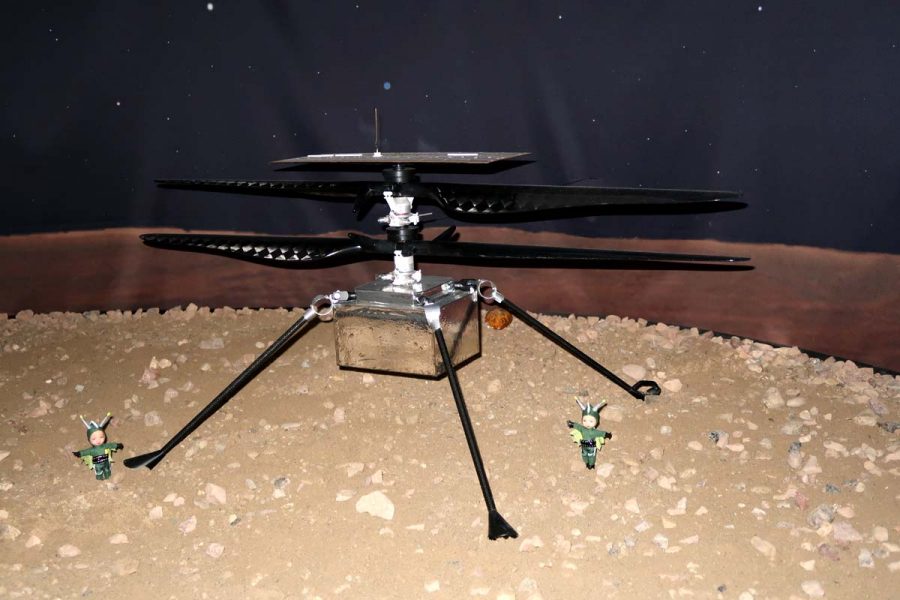NASA launches helicopter on Mars
April 27, 2021
NASA launched the first ever helicopter on another planet on April 19.
The Ingenuity drone helicopter was launched on the surface of Mars from a NASA Jet propulsion laboratory on Earth with the help of the Mars rover, the Perseverance.
“Now, 117 years after the Wright brothers succeeded in making the first flight on our planet, NASA’s Ingenuity helicopter has succeeded in performing this amazing feat on another world,” NASA Associate Administrator for Science Thomas Zurbuchen said. “While these two iconic moments in aviation history may be separated by time and 173 million miles of space, they now will forever be linked. As an homage to the two innovative bicycle makers from Dayton, this first of many airfields on other worlds will now be known as Wright Brothers Field, in recognition of the ingenuity and innovation that continue to propel exploration.”
Because of the incredible distance between Earth and Mars, there was a very long delay for the team to find out whether the helicopter worked.
¨The team behind Ingenuity had waited for more than three nail-biting hours for news of the helicopter’s success, which was delayed by the need for Perseverance to relay the flight’s data to a satellite orbiting overhead and then to Earth,¨ said Lee Billings in his article ‘See Ingenuity Team’s Joy after the First Mars Helicopter Soars” for Scientific America.
The Ingenuity team had to be very careful with the test because of the helicopter’s limited battery power. The helicopter is charged with solar panels, but because the sun is not always available for the drone, it runs the risk of being caught far away without enough battery to return.
Although this was just a test flight with no scientific instruments attached, it opens the door to many possibilities. Future operations for this helicopter will be continued testing of its capabilities. NASA will continue to test how far out the helicopter can reach.
One likely use for the helicopter would be to attach a camera to it and have it take aerial pictures of Mars.
It took the Ingenuity team many years to finally finish the helicopter’s design and launch this test.
After many tries, the team eventually settled on a design with a narrow body with multiple long bladed rotors. To keep the helicopter narrow, the traditional helicopter design with a horizontal rotor, which controls the torque, was not an option. To control the torque, NASA used two different vertical rotors that spun in opposite directions, a design similar to the ones on Chinook helicopters. The Ingenuity had a rotor shaft within the main rotor shaft that spun independently.
A large obstacle for creating a helicopter that works on other planets is the planet’s atmosphere. Because Mars is so small, its gravity is one-tenth of Earth’s gravity. The other issue was the different density of Mars’ atmosphere. The gases on Mars are much thinner than on Earth, and so that necessitated longer blades on helicopter to achieve lift. Also, because of the thin gasses on Mars’s atmosphere, the helicopter cannot fly nearly as high as it would be able to be on Earth.



















